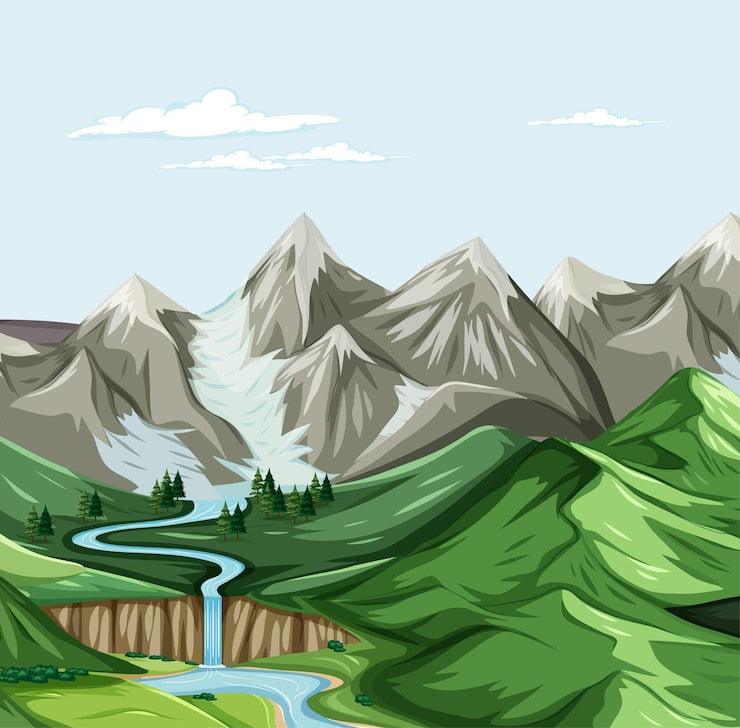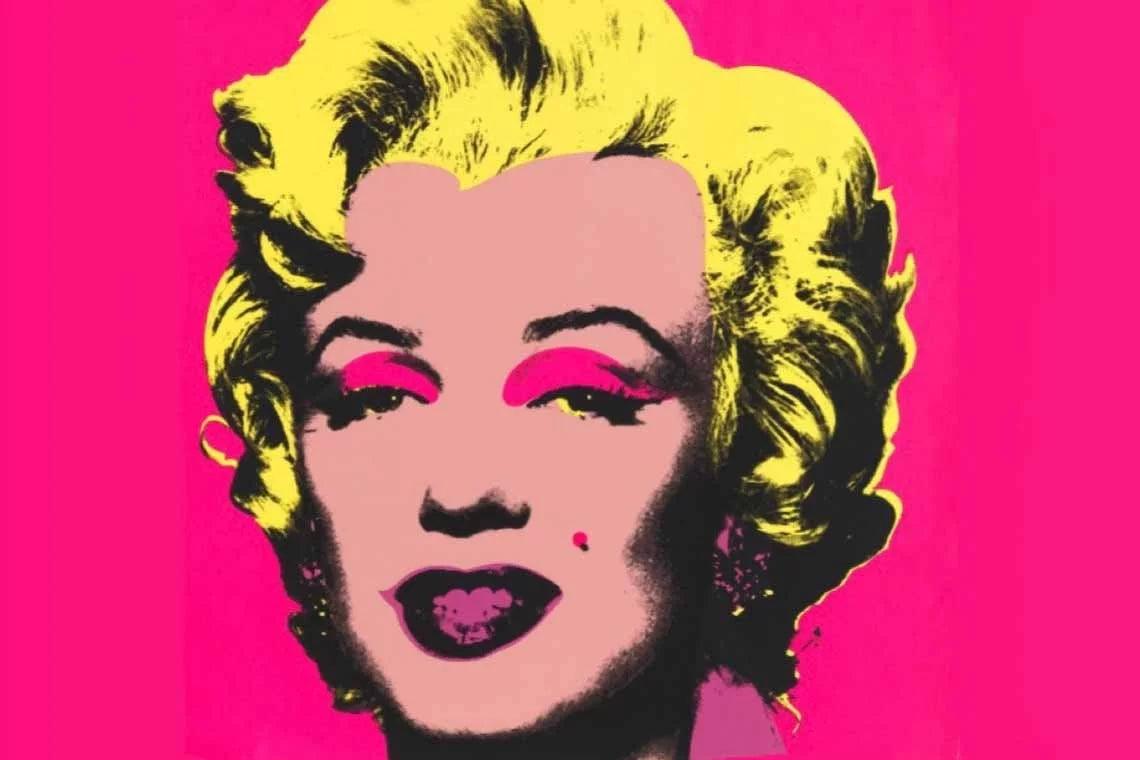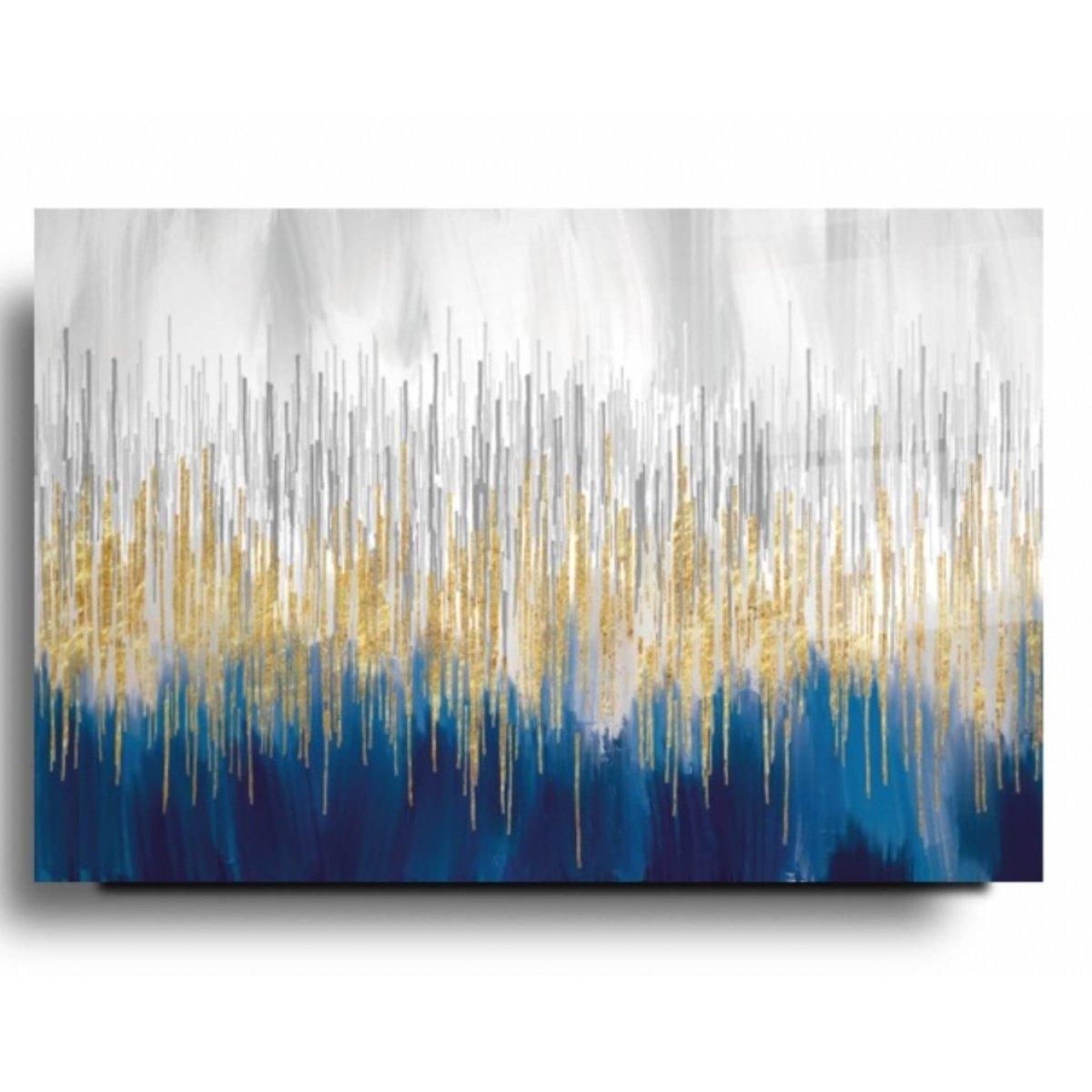Introduction to Mountain Landscape Drawing

Drawing landscapes has always been a captivating form of artistic expression. The ability to capture the beauty and grandeur of nature on paper is truly awe-inspiring. Whether you're a seasoned artist or just starting out, landscape drawing offers a wonderful opportunity to unleash your creativity and immerse yourself in the tranquility of nature.
Benefits of Drawing Landscapes

Engaging in landscape drawing provides numerous benefits for both the mind and soul. As you immerse yourself in the process, you'll find that it offers a therapeutic escape from the stresses of everyday life. The act of observing and recreating nature's wonders allows you to experience a sense of peace and tranquility.
Furthermore, landscape drawing enhances your observational skills and attention to detail. It trains your eye to notice intricate patterns, textures, and the play of light and shadow. This keen observation extends beyond the artistic realm, positively impacting your ability to appreciate and understand the world around you.
Tools and Materials for Landscape Drawing

Before embarking on your landscape drawing journey, it's important to gather the right tools and materials. While the specific requirements may vary depending on your preferred medium, some essentials include:
Sketchbook or drawing pad: Choose a high-quality sketchbook with acid-free paper that can withstand various drawing techniques.

Graphite pencils: Opt for a set of pencils with varying degrees of hardness, allowing you to create a range of light and dark values.
Erasers: Have a kneaded eraser for lifting graphite and a white vinyl eraser for more precise erasing.

Drawing pens: If you prefer a more defined and precise line, consider using drawing pens with different tip sizes.
Brushes and paints: For artists exploring color in their landscape drawings, watercolor or acrylic paints and a set of brushes will be essential.
Tips for Drawing Landscapes

Drawing landscapes can be an exciting yet challenging endeavor. Here are some valuable tips to help you navigate this artistic journey:
Simplify complex scenes: When starting out, it's best to choose simple landscapes to draw. Look for scenes with clear shapes and distinct elements that will be easier to capture on paper.
Understand composition: Study the principles of composition to create visually appealing drawings. Experiment with different arrangements of elements within your landscape, such as the rule of thirds or leading lines.

Capture light and shadow: Observe how light falls on the landscape and create depth by accurately representing the play of light and shadow. This will bring your drawings to life and add a realistic touch.
Vary your line work: Experiment with different types of lines, such as short, dashed strokes for foliage or long, sweeping lines for mountains. This variation adds visual interest and texture to your drawings.

Practice regularly: Like any skill, landscape drawing requires practice. Dedicate regular time to honing your artistic abilities and experimenting with different techniques. The more you draw, the more your skills will grow.
Step-by-Step Guide to Drawing a Simple Landscape

Now, let's dive into a step-by-step guide to drawing a simple landscape. This exercise will help you familiarize yourself with the basic elements and techniques involved in landscape drawing.
Start by sketching the horizon line lightly across your paper. This line represents the separation between the sky and the land.
Next, outline the basic shapes of the land, such as hills, valleys, or mountains. Keep the lines loose and fluid to capture the organic nature of the landscape.

Add details to your landforms, such as trees, rocks, or buildings. Remember to vary the size, shape, and position of these elements to create visual interest.
Move on to the sky and add cloud formations. Use soft, sweeping strokes to capture the ethereal nature of the clouds.

Finally, refine your drawing by adding smaller details, such as grass, flowers, or birds. Pay attention to the play of light and shadow within these elements.
Remember, this is just a starting point, and as you gain confidence, you can experiment with more complex landscapes and techniques.
Exploring Different Types of Landscapes to Draw

The world is filled with an incredible variety of landscapes, each possessing its unique charm and character. Here are some popular types of landscapes to explore in your drawings:
Coastal scenes: Capture the beauty of sandy beaches, crashing waves, and rocky cliffs. Experiment with different textures to convey the movement of water and the ruggedness of the coastline.
Woodlands and forests: Delve into the mysteries of dense forests, capturing the interplay of sunlight filtering through the trees and the abundance of wildlife.

Mountain vistas: Challenge yourself with the majestic grandeur of mountains. Depict the towering peaks, sweeping valleys, and cascading waterfalls.
Rural countryside: Embrace the tranquility and simplicity of rural landscapes. Picture rolling hills, farmlands, and charming cottages nestled amidst nature.

Urban landscapes: Don't overlook the beauty found in bustling cities. Explore the contrast between towering skyscrapers and the human element that brings such landscapes to life.
Each type of landscape presents its own set of challenges and rewards, allowing you to broaden your artistic horizons and develop new skills.
Finding Inspiration for Landscape Drawings

Inspiration for your landscape drawings can be found everywhere if you have a keen eye. Here are some sources to help you find the spark of creativity:
Personal experiences: Draw from your own memories of breathtaking landscapes you've encountered in your travels or nature walks.
Photography: Browse through photography books, websites, or your own photo collection to find captivating scenes to draw.
Art museums and galleries: Explore the works of renowned landscape artists throughout history. Study their techniques and use them as a source of inspiration.
Nature itself: Step outside and immerse yourself in the natural world. Observe the interplay of light, colors, and textures firsthand, and let nature guide your artistic choices.
Remember, inspiration can strike at any moment, so always be open to new ideas and perspectives.
Enhancing Your Landscape Drawings with Color

While black and white landscape drawings possess their own charm, adding color can elevate your artwork to new heights. Here are some tips to enhance your landscape drawings with color:
Color theory: Familiarize yourself with the basics of color theory, including the color wheel, complementary colors, and warm versus cool tones. This knowledge will help you create harmonious and visually pleasing color palettes.

Study nature: Observe the colors found in nature, paying attention to the subtle variations and hues. This will guide your color choices and make your drawings more authentic.
Layering techniques: Experiment with layering different colors to create depth and richness in your drawings. Start with light washes and gradually build up the intensity as you add more layers.
Color temperature: Use warm colors for objects in the foreground to make them appear closer, and cool colors for objects in the background to create a sense of distance.
Remember to approach color with confidence and allow it to enhance the mood and atmosphere of your landscape drawings.
Resources for Learning and Improving Landscape Drawing Skills

If you're looking to enhance your landscape drawing skills or learn new techniques, there are several resources available to guide you on your artistic journey. Here are some recommendations:
Art classes and workshops: Enroll in local art classes or workshops that focus specifically on landscape drawing. These provide valuable hands-on instruction and an opportunity to learn from experienced artists.
Online tutorials and courses: Explore online platforms that offer comprehensive tutorials and courses on landscape drawing. Websites like Skillshare, Udemy, or YouTube have a plethora of resources to suit various skill levels.
Books and instructional guides: Invest in instructional books that delve into various aspects of landscape drawing. Look for titles by renowned artists or those that focus specifically on the techniques you wish to learn.
Remember, learning is a continuous process, and by consistently seeking new knowledge and skills, you'll continue to grow as an artist.
Conclusion

Landscape drawing offers a gateway to unleash your creativity and immerse yourself in the beauty of nature. Through this art form, you not only develop your artistic skills but also find solace and inspiration in the world around you. Whether you choose to draw serene mountainscapes or bustling urban scenes, the possibilities for exploration and expression are endless. So grab your pencil, head to the nearest peak, and let your imagination soar as you embark on your landscape drawing journey.







Leave a comment
All comments are moderated before being published.
This site is protected by reCAPTCHA and the Google Privacy Policy and Terms of Service apply.